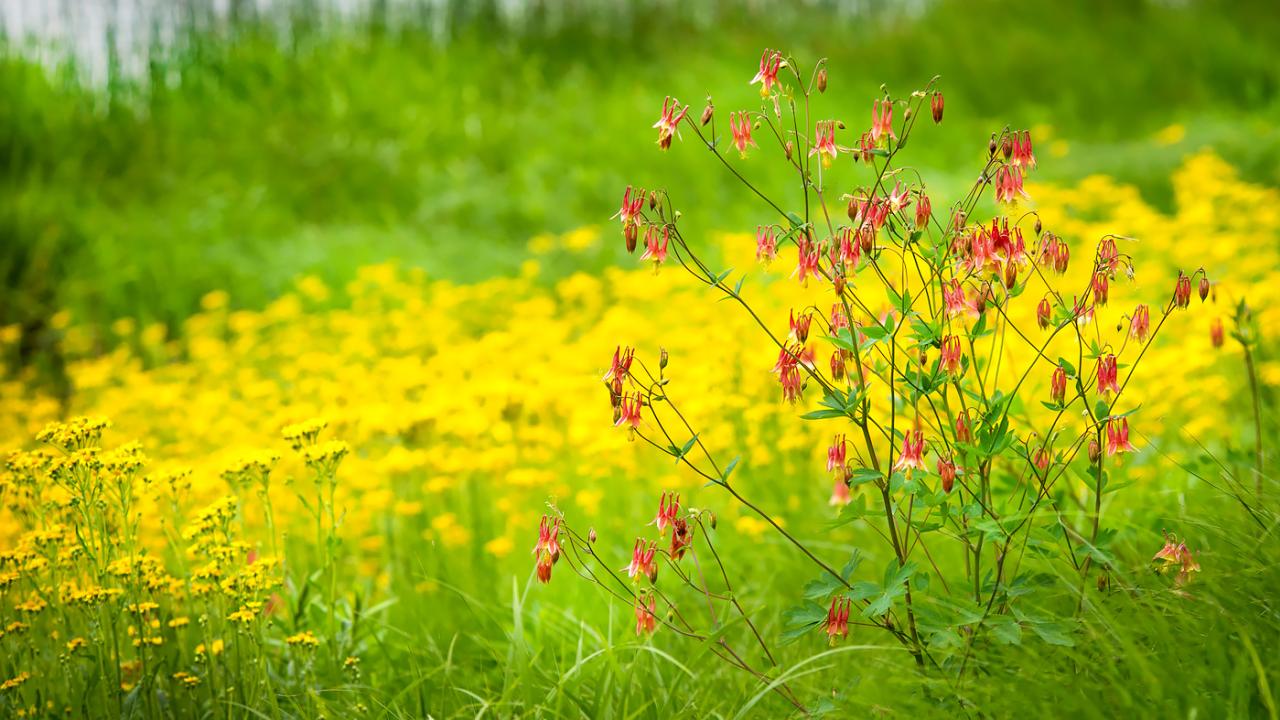

Plant Science &
Conservation
Garden Stories
To Stop Plant Extinctions, Garden Scientists Look to Zoos
Can a plant come back from extinction in the wild?
Chicago Botanic Garden scientists think so. Their belief is reflected in the rows of rare alula (Brighamia insignis) growing discreetly in a Garden production greenhouse.

Alula (Brighamia insignis) growing at the Chicago Botanic Garden. Photo by Jeremie Fant.
While last seen in the wild a decade ago, with just one plant clinging to a wind-swept sea cliff on a Hawaiian island, alula is still seen today by visitors at botanic gardens around the world. These living collections of alula hold the key to their survival in the wild—but only if they are managed well.
That’s why Garden scientists helped develop the “plant studbook” approach—inspired by the way zoos manage breeding—so botanic gardens can share genetic information about individual plants and manage their living collections as a single, global population. By working together, scientists have a better chance of preventing extinctions and reintroducing plants, like alula, into the wild.
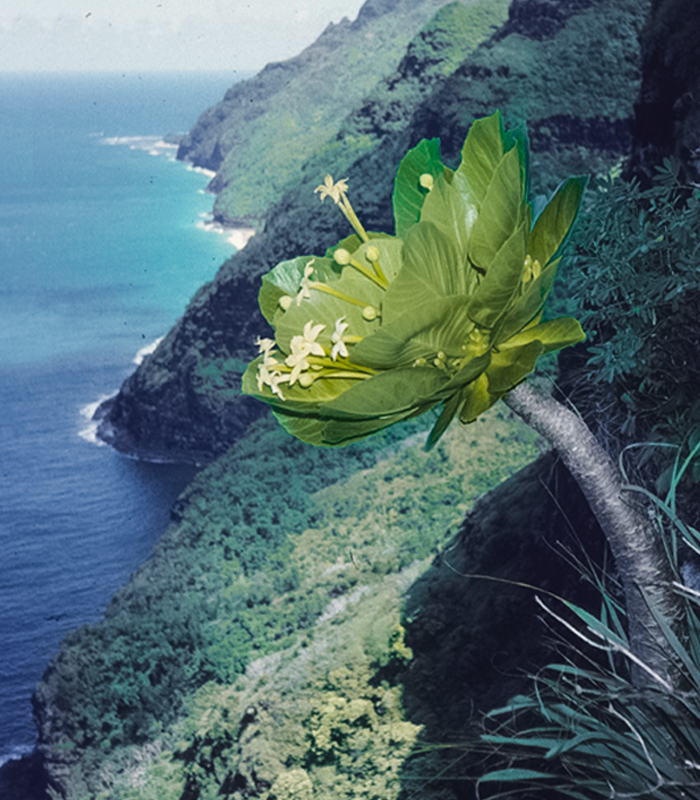
One of the last alula growing on the sea cliffs of Kauai. No plants have been documented in the wild since 2012. Photo by Ken Wood, National Tropical Botanical Garden.
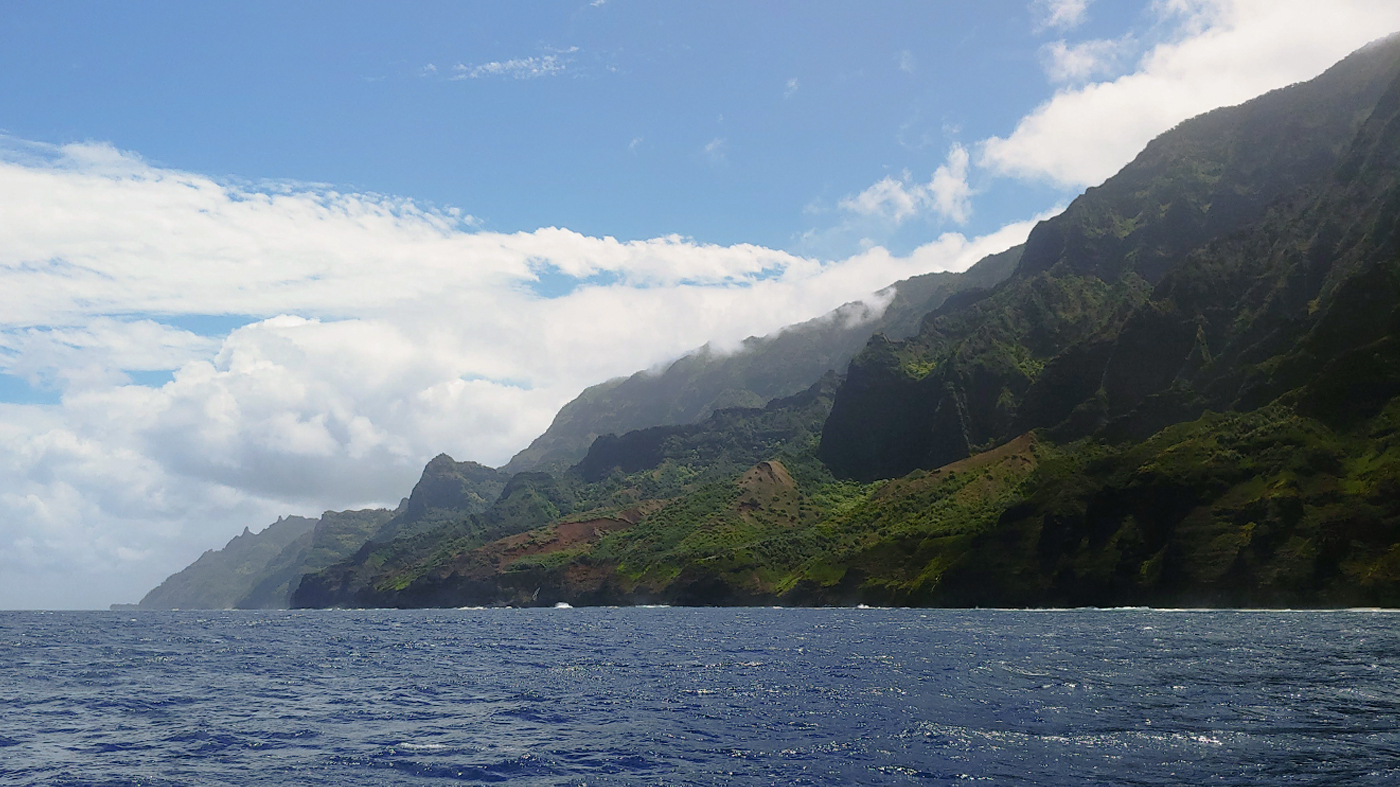
The sea cliffs of Kauai were one of the last refuges for alula in the wild. Photo by Jeremy Foster.
Seed collecting on a sea cliff
Alula’s swollen, unbranched stem narrows toward the top, producing a broad rosette of leaves—a look that earned it the name “cabbage on a stick” and made it a popular addition to botanic garden collections.
You can see alula at botanic gardens today because of a daring project started by Hawaii’s National Tropical Botanic Garden (NTBG) in the 1970s. To protect declining alula populations—impacted by feral goats, hurricanes, and the presumed loss of its insect pollinator—researchers climbed treacherous sea cliffs on the islands of Kauai and Molokai to hand-pollinate the remaining plants. Returning later, they collected seeds and sent them to botanic gardens around the world.
But after decades of living at botanic gardens, alula needed another rescue.

Garden scientists worked with students from the Research Experiences for Undergraduates program and the Graduate Program in Plant Biology and Conservation on the alula plant studbook project. Photo by Jeremy Foster.
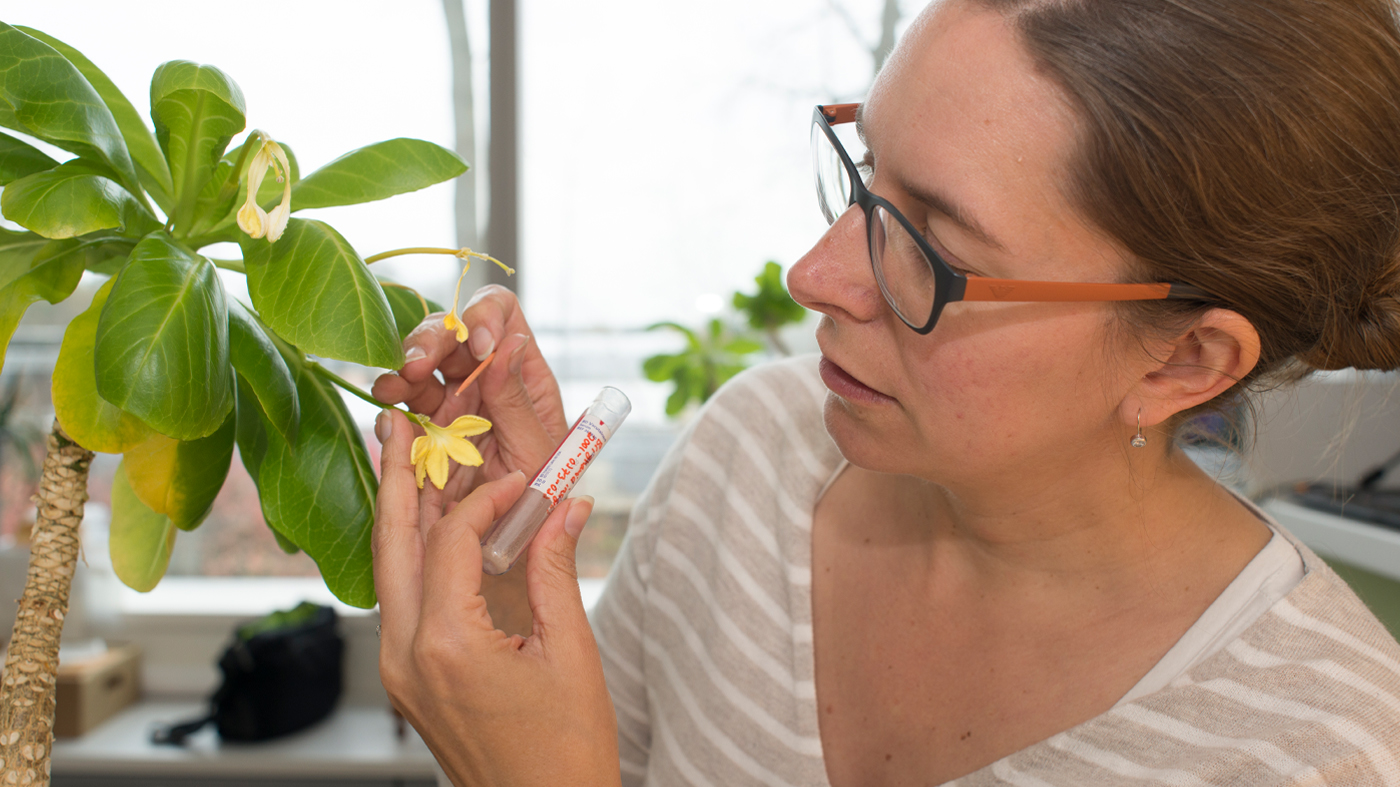
Andrea Kramer, Ph.D., plant conservation scientist at the Negaunee Institute, hand-pollinates alula in the Garden’s living collection.
Looking to zoos to help save plants
Alula, like thousands of other rare and endangered species, has seeds that can’t be stored for long in a seed bank, making living plant collections the main insurance policy against extinction. But when institutions maintain their small collections in isolation, they can become inbred and lose diversity. As living plant collections become unhealthy, they may lose the ability to support successful reintroductions in the future.
To solve this problem, scientists at the Garden looked to a tool widely used at zoos.
Zoos use studbooks to document and share the pedigree (essentially a family tree) of animals living at zoos around the world. Working together, zoos—and now botanic gardens—can use this information to make decisions about breeding to maintain healthy, genetically diverse global populations.
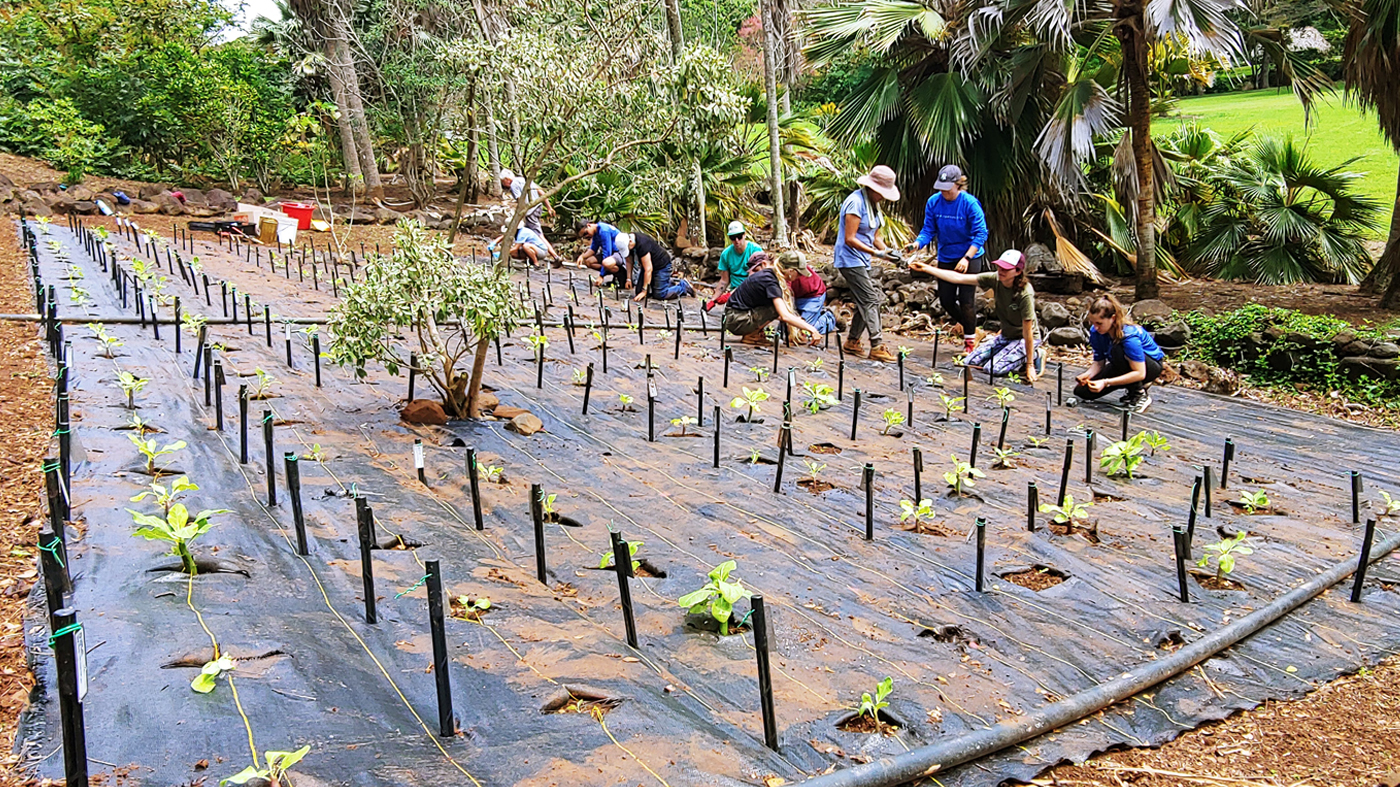
NTBG staff established two experimental plots of alula on Kauai. Photo by Jeremy Foster.
Collaborating on a comeback
Last year, the Garden worked with Seana Walsh, Ph.D., a conservation scientist at NTBG, to establish roughly 400 plants in two experimental plots at NTBG on Kauai, bringing alula a step closer to growing again in the wild. The plants were grown from seed sent by Garden scientists and produced by breeding alula from the Garden and three other institutions—informed by a plant studbook.
Researchers are tracking their progress and monitoring for the return of a natural pollinator community, which could allow a true return to the wild.
Getting to this point took years of effort by the Garden and partners at NTBG, the United States Botanic Garden, Brookfield Zoo, the San Diego Zoo, and Botanic Gardens Conservation International to show the promise of the plant studbook approach with alula. The collaboration involved building pedigrees, mailing pollen across the country, and hand-pollinating alula in the Garden’s living collection.
Botanic Gardens Conservation International just launched a new version of its PlantSearch database that incorporates the plant studbook approach, and next year scientists from the Garden and NTBG will help train colleagues on three continents, making these collaborative projects even easier.
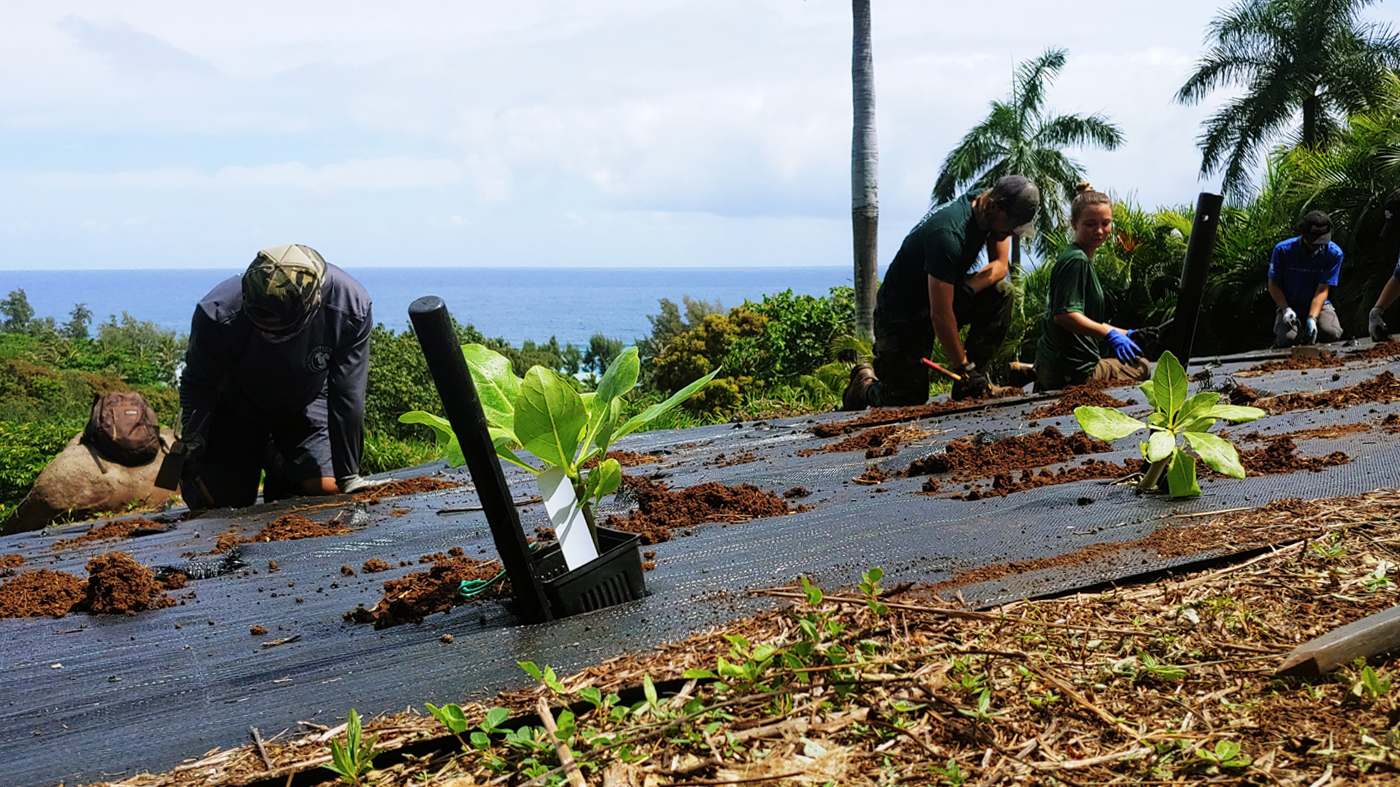
Alula awaiting planting at NTBG on Kauai. Photo by Jeremy Foster.
“Nature has paid a price”
While alula is rare, the story of its decline is not—almost 50% of known flowering plants are estimated at risk of extinction. And you don’t need to visit Hawaii to find rare and endangered species, they are also holding on in the face of habitat loss, invasive species, and climate change across the Midwest.
Garden scientists are working hard to make sure we use every tool possible to stop plant extinctions here and around the world, and the plant studbook approach is now one of the best hopes for thousands of rare and endangered species.

